MARIANI’S
Virtual
Gourmet
June 28,
2020
NEWSLETTER
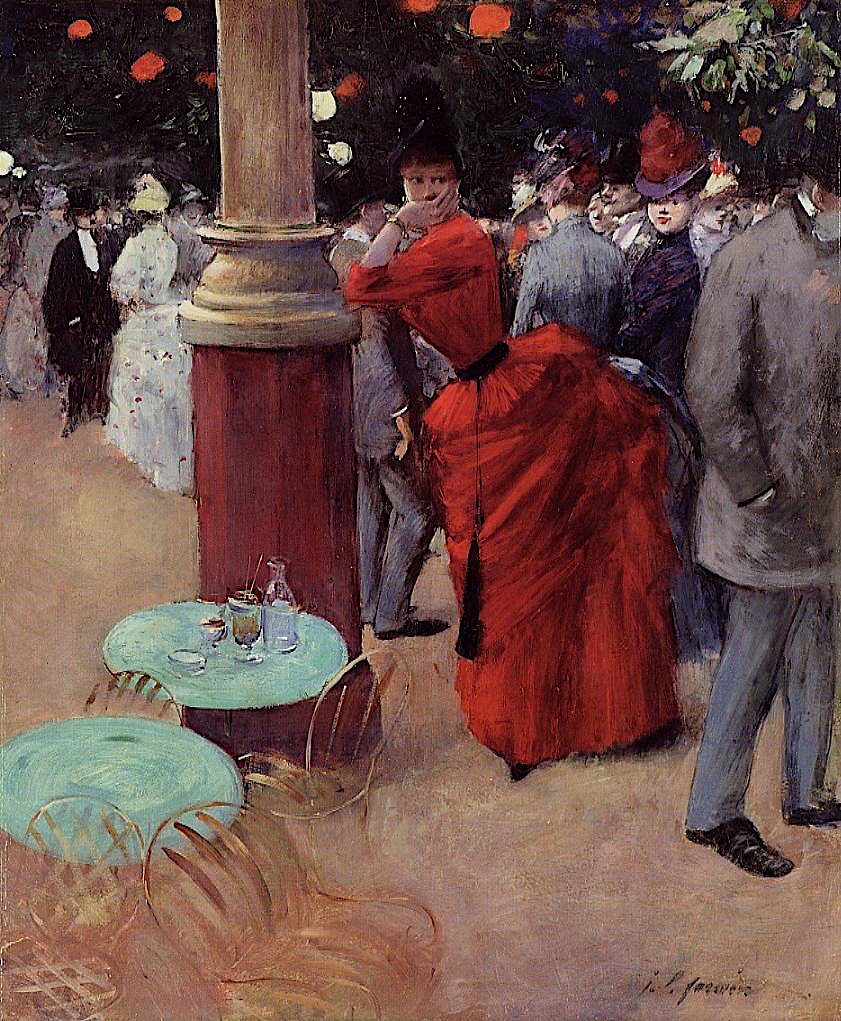
"The
Public Garden" by Jean-Louis Forain (1884)
❖❖❖
IN THIS ISSUE
GRAND HOTEL TREMEZZO
RE-OPENS ON LAKE COMO
By John Mariani
NEW YORK CORNER
LOVE AND PIZZA
Chapter Fourteen
By John Mariani
NOTES FROM THE WINE CELLAR
GREAT WINES OF
THE WILLAMETTE VALLEY
By John Mariani
❖❖❖
GRAND HOTEL TREMEZZO
RE-OPENS ON LAKE COMO
By John Mariani
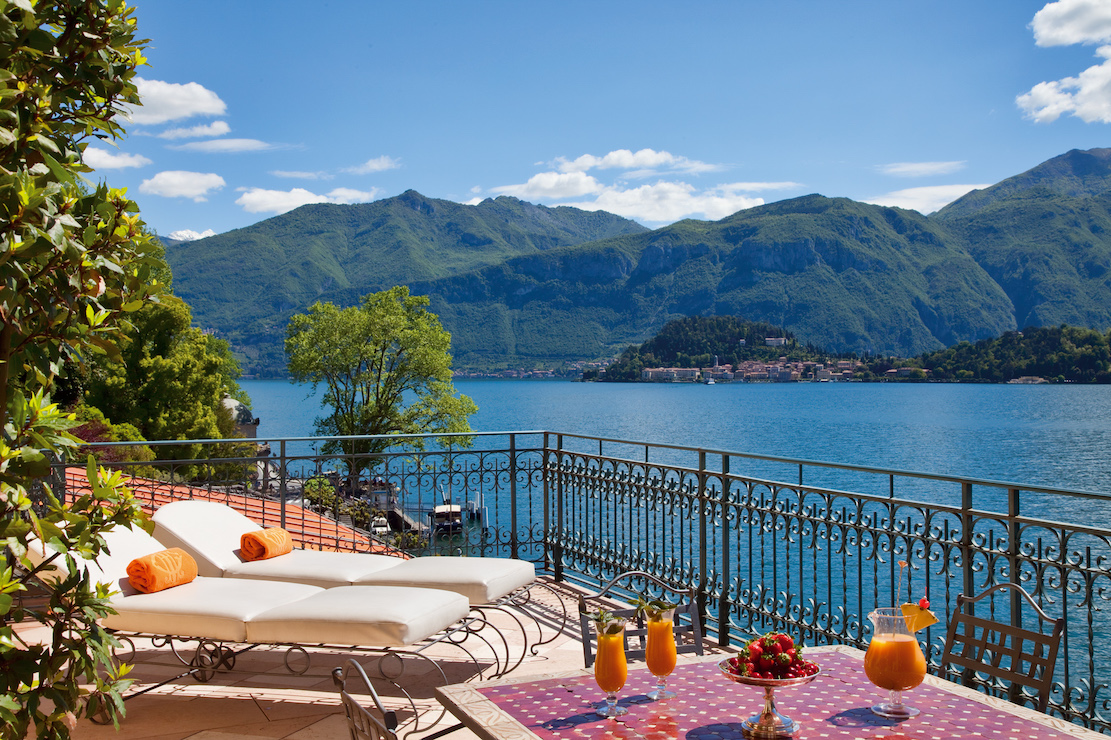
It
is with a sigh of relief that I received the
news that Grand Hotel
Tremezzo on Lake Como was re-opening this month
after Italy’s four-month total lock-down during
the corona virus pandemic. The hotel had been
closed late last fall as usual for the winter
season and due to re-open in March. So it’s
been a very long and difficult time for everyone
at the hotel as well as for those, like myself,
who regard the resort as one of the finest in
Italy.
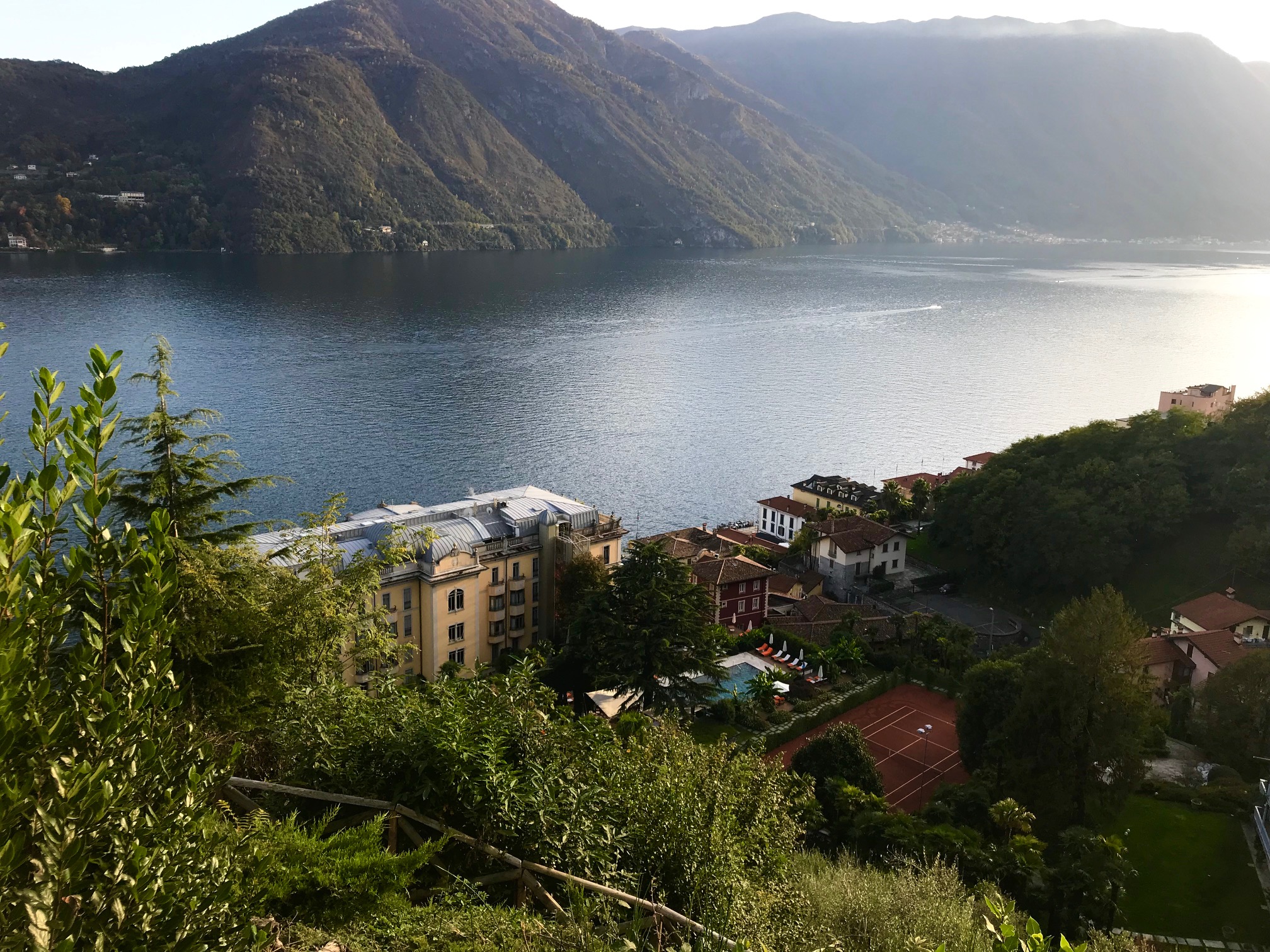 For its
location alone, in the tiny town Tremezzo at one
of the most picturesque parts of lake, the hotel
has both a spectacular view and an isolated
quietude felt at its most charming in the hillside
gardens designed by Emilio Trabella that surround
it, now with new 100 olive trees added (left). The hotel dates to
1910 at a time when Europe’s leisure class went on
their grand tours for months at places like the
Villa D’Este and Villa Serbelloni (also now
re-opened), but Enea and Maris Gandola wanted
something smaller, more secluded and more intimate
for guests, who, after World War I, increasingly
came to the area for health and sport. In the
1930s ownership passed to the Sampietro family,
who managed to keep it open during World War II,
and the post-war growth of international tourism,
not least American (who last year made up 43% of
the clientele), made Tremezzo famous as a place of
unpretentious luxury and Italian savoir-faire.
For its
location alone, in the tiny town Tremezzo at one
of the most picturesque parts of lake, the hotel
has both a spectacular view and an isolated
quietude felt at its most charming in the hillside
gardens designed by Emilio Trabella that surround
it, now with new 100 olive trees added (left). The hotel dates to
1910 at a time when Europe’s leisure class went on
their grand tours for months at places like the
Villa D’Este and Villa Serbelloni (also now
re-opened), but Enea and Maris Gandola wanted
something smaller, more secluded and more intimate
for guests, who, after World War I, increasingly
came to the area for health and sport. In the
1930s ownership passed to the Sampietro family,
who managed to keep it open during World War II,
and the post-war growth of international tourism,
not least American (who last year made up 43% of
the clientele), made Tremezzo famous as a place of
unpretentious luxury and Italian savoir-faire.
The local De
Santis family bought the hotel in 1973, now
overseen by the elegant and ebullient Valentina
De Santis, who has promised that all will be as it
was before, from the elegantly appointed guest
rooms to the stately, highly colored lobby with
its silk-covered walls, reached by a small
elevator. My wife and I stayed
at Grand Tremezzo last autumn, and I’ve been
anxious to write about our experience, but the
pandemic shut-down made me fear that I might never
do so or perhaps not as we enjoyed it then. The rooms, each
different, all with a view of the lake or gardens,
have LCD flat screen satellite
TV, free Wi-Fi, and very large marble
bathrooms. For the moment, under Italian
regulations, only 30 of the 90 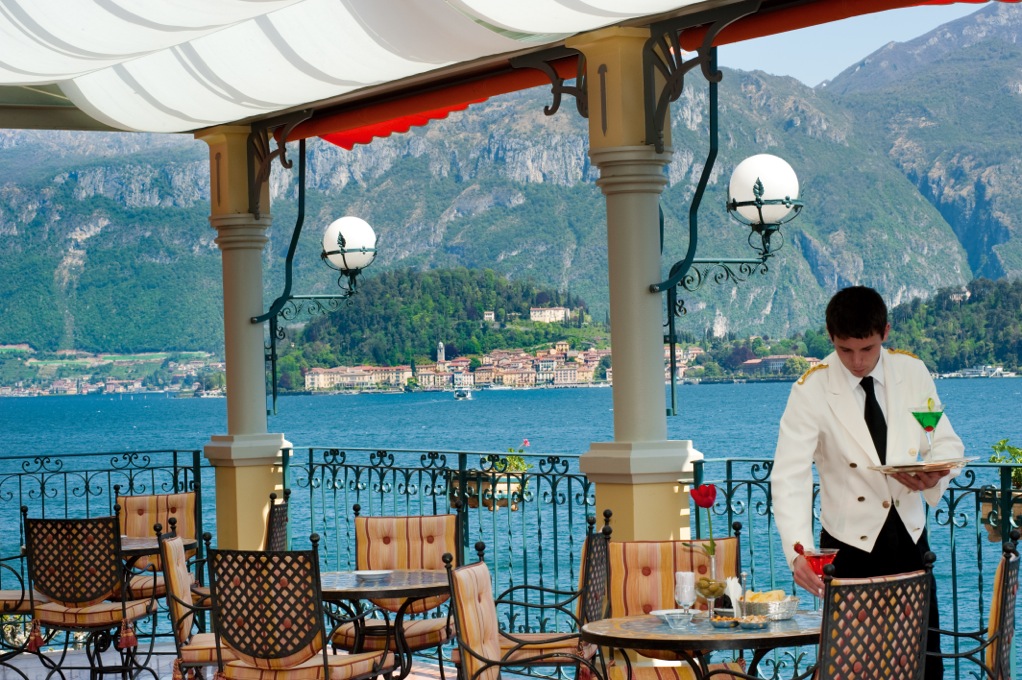 rooms have been
initially re-opened, with prices ranging from €890
to €4,800.
rooms have been
initially re-opened, with prices ranging from €890
to €4,800.
Tremezzo is only an hour’s
drive from Milan, but taking the train to Como
then a boat ride on cloud-reflecting water is much
more romantic. The hotel also has its own
beautiful wooden motorboat you may hire for tours
of the area (a one-hour tour for up to six people
is €300), and a ferry stops almost in front of the
hotel to take you across the lake to the hillside
town of Bellaggio.
Checking into the Grand
Tremezzo puts you into an immediate relationship
with the half-dozen Italians who staff it, and
they know your name well before you cross the
lobby.
We had lunch on the terrace,
then strolled through the little town of Tremezzo,
lined with trattorias and boutiques. The glorious
Villa Carlotta museum, now open, set on four acres
is just next door, with a very fine collection of
art including some Canova statues of stunning
beauty.
The Grand
Tremezzo’s T Spa has also been renovated (the
sauna will open when it gets the green light), the
two outdoor pools will be open as well as the new
T Beach for the same number of guests as before
but double the space, and the T Bar for snacks and
pizza.
That evening we dined at the
newly renovated, grotto-like L’Escale (left), once
quite rustic but now very sleek in its décor and
lighting, with a handsome wine wall and a wide
array of Italian charcuterie and cheeses that we
whet our appetite with, followed by delicate agnolotti
filled with eggplant “caviar” in a sweet tomato
sauce, and an excellent spaghetti all’amatriciana
with a tomato, guanciale, onion and chile pepper
sauce. Pizza is served during the day.
The next morning we were
somehow ravenous but not even Boccaccio or
Gargantua could make a dent in the offerings
displayed on many tables in the sunlit breakfast
room next to the huge, new kitchen, with daunting
numbers of cheeses, breads, salume and hams, egg
dishes, cooked dishes, carafes of juices,
preserves and condiments, butter and yogurt,
chocolates and enough muffins, cakes and cookies
to fill a town pasticceria.
International newspapers are available, and the
service of espresso and cappuccino is done with
amiable dispatch.
All food service is overseen by Chef
Osvaldo Presazzi, here 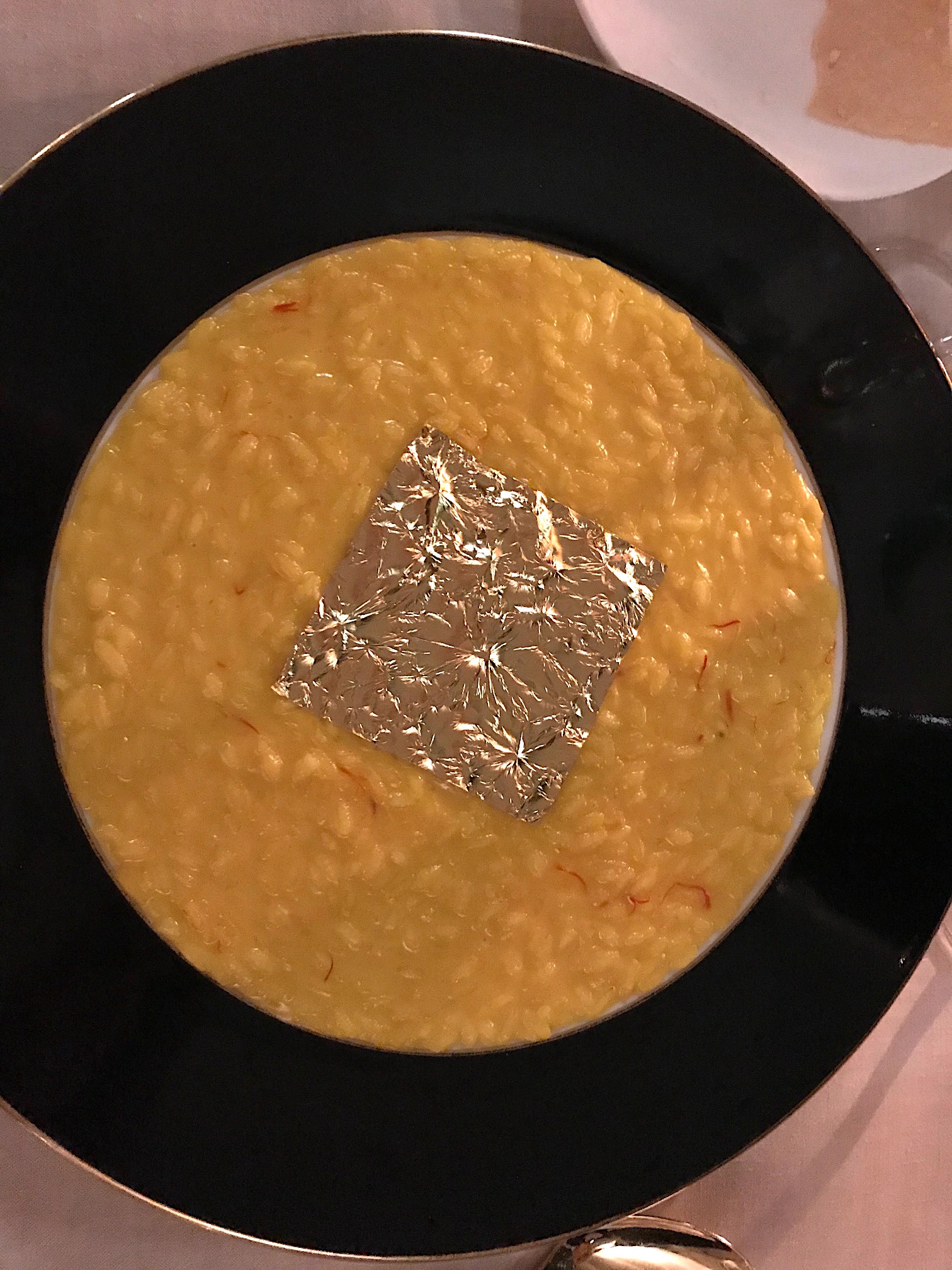 since
1992, an acolyte of the late Italian master
Gualtiero Marchesi, whose elegant classic and nuova cucina
is featured at La Terrazza overlooking the
lake. When we dined there last fall by
candlelight, we zeroed in on the Lombardian
dishes, beginning with scallops with a
sauce of lettuce; a velvety foie gras terrine
graced with balsamico
tradizionale, then thin ring-shaped pasta called anelli made into savory
pancakes filled with ricotta and spinach; and al
dente macaroni with lobster, and Marchesi’s
signature dish (right),
saffron risotto with a square of edible gold foil.
Our main courses were a young local rooster with
potatoes and spring onions, and a fish indigenous
to Lake Como called lovarello.
Desserts far exceed what is usual in Italian
restaurants, and the wine list is one of the
finest outside of Milan.
since
1992, an acolyte of the late Italian master
Gualtiero Marchesi, whose elegant classic and nuova cucina
is featured at La Terrazza overlooking the
lake. When we dined there last fall by
candlelight, we zeroed in on the Lombardian
dishes, beginning with scallops with a
sauce of lettuce; a velvety foie gras terrine
graced with balsamico
tradizionale, then thin ring-shaped pasta called anelli made into savory
pancakes filled with ricotta and spinach; and al
dente macaroni with lobster, and Marchesi’s
signature dish (right),
saffron risotto with a square of edible gold foil.
Our main courses were a young local rooster with
potatoes and spring onions, and a fish indigenous
to Lake Como called lovarello.
Desserts far exceed what is usual in Italian
restaurants, and the wine list is one of the
finest outside of Milan.
I shall
be writing soon about other hotels and restaurants
around the beautiful city of Como as they re-open,
and, having lost four months of business, I wish
them every stroke of buona fortuna
this summer.
❖❖❖
By John Mariani
LOVE AND PIZZA
Since, for the time being, I am unable to write about or review New York City restaurants, I have decided instead to print a serialized version of my (unpublished) novel Love and Pizza, which takes place in New York and Italy and involves a young, beautiful Bronx woman named Nicola Santini from an Italian family impassioned about food. As the story goes on, Nicola, who is a student at Columbia University, struggles to maintain her roots while seeing a future that could lead her far from them—a future that involves a career and a love affair that would change her life forever. So, while New York’s restaurants remain closed, I will run a chapter of the Love and Pizza each week until the crisis is over. Afterwards I shall be offering the entire book digitally. I hope you like the idea and even more that you will love Nicola, her family and her friends. I’d love to know what you think. Contact me at loveandpizza123@gmail.com
—John Mariani
To read previous chapters go to archive (beginning with March 29, 2020, issue.
LOVE AND PIZZA
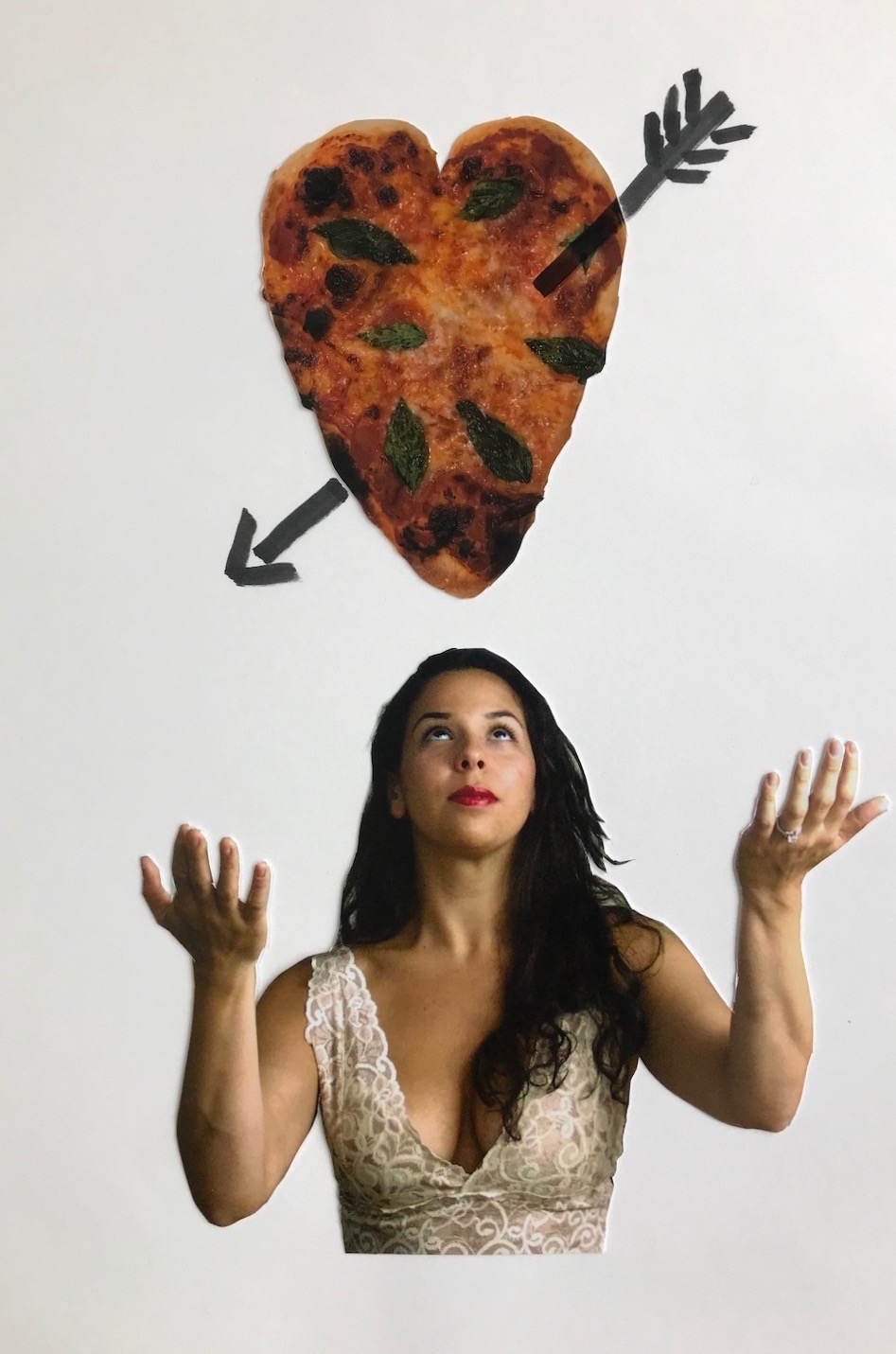
Cover Art By Galina Dargery
Nicola and Catherine
exited the Armani show
quickly and, realizing that taxis would be
impossible to hail, ran to the
restaurant Bagutta on the street of the same
name (left).
Since the 1920s Bagutta had
been a journalists’ haunt but in the 1950s it
attracted the international movie
crowd, like Gina Lollabrigida, Claudia
Cardinale, Yves Montand and Ingrid
Bergman, whose photos hung among the art on the
walls. Now, during Fashion
Week, it would be packed by designers, buyers,
models and photographers, all
vying for what they perceived to be the best
tables.
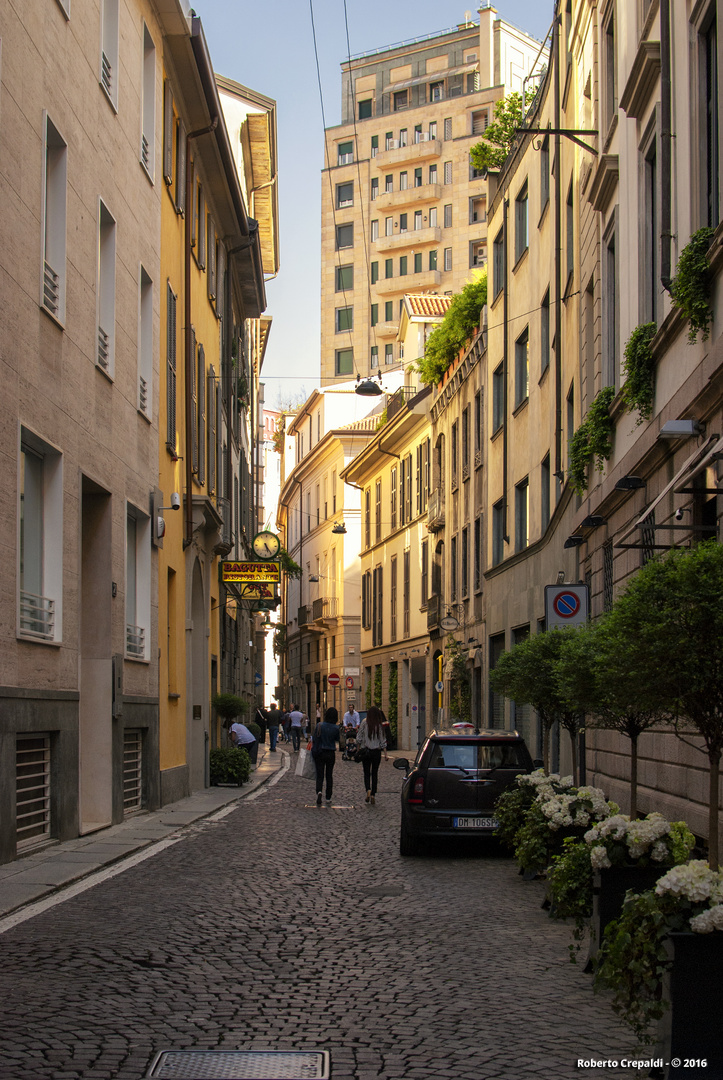 Nicola and
Catherine had dined at Bagutta
several times, and, although they were not among
the fashionistas about to
descend upon the restaurant that day, they were
always extremely well received
and given tables in the nicer rooms by the maître
d’ named Carlo, largely
because they were beautiful American women who
reveled in spending their
American dollars at the restaurants.
Pretty girls always “dressed” a room, said
Carlo, so Nicola and
Catherine never had a problem getting a table.
More than once, they were asked
by regulars if they were models.
Nicola and
Catherine had dined at Bagutta
several times, and, although they were not among
the fashionistas about to
descend upon the restaurant that day, they were
always extremely well received
and given tables in the nicer rooms by the maître
d’ named Carlo, largely
because they were beautiful American women who
reveled in spending their
American dollars at the restaurants.
Pretty girls always “dressed” a room, said
Carlo, so Nicola and
Catherine never had a problem getting a table.
More than once, they were asked
by regulars if they were models.
It was by then one o’clock and,
with no more
shows scheduled till later that afternoon and
evening, the buyers with sales
books in hand and the reporters and editors with
spiral pads or Moleskine
notebooks descended on the restaurant.
Outside, the streets were lined, double
parked, with limos, which in
Italy did not mean stretch Lincoln Continentals
but Mercedes-Benzes and
BMWs. Paparazzi
as thick as flies
formed a semi-circle around the entrance of the
restaurant, snapping away at
everyone who entered.
The
girls had arrived at Bagutta ahead of the
crowd and, having made a reservation, were greeted
cordially by Carlo, who
asked them, “Is the Armani show
finished?”—expecting an onslaught within
moments. The girls told him yes and he shook his
head, his hands shaking in
exasperation, confiding, “This
week is tutto
pazzo! Is impossible
to
please anyone!
Everyone come to
see who is with everyone else at every table. And
we have two more days to go!”
Nicola and Catherine were shown
to a table in
the first room, beyond the art-lined entrance
hall, soon to be occupied by
editors, reporters, buyers and sellers, along with
young chain-smoking
designers who had already had their show on Monday
or that morning and who looked
far too nervous to eat anything.
Everybody did indeed seem to
arrive at once,
some of them effusively showing off that they knew
Carlo and vice versa, others
waiting before the maître d’ stand for less than
five seconds before starting
to fume with impatience. Captains
were pressed into service, checking the guest list
as the guest tapped his
fingers on the stand. Carlo did,
of course, know many of them on sight, giving them
a big smile, addressing them
by name and showing them immediately to their
table, some of which had
“RISERVATO” signs on them.
It went without saying that
every waiting guest
was well aware of which were supposedly the “A”
tables, all in the front rooms,
each with only four coveted corners.
Of course, the other rooms at Bagutta were
equally as comfortable, every
one with walls completely covered with artwork. But they were not the right
tables, so the people waiting in limbo would insist they had a reservation that
Carlo could not find—“Is it
possible, signore,
it is under another
name?”—and eyed the room like secret service
agents looking for assassins among
a crowd of dignitaries.
If
a guest was of obvious importance and known to
those waiting—a top designer,
editor or major buyer—no effrontery could be
taken. But if someone
unfamiliar were to be seated in the first or even
the second room, faces fell
or grew red.
Hands slid into
pockets and out came high-denomination lira
notes, shoved into Carlo’s willing palm. But Carlo knew that if
he could not provide the kind
of fawning resolution of their problem to their
complete satisfaction, it would
be absurd to accept their money.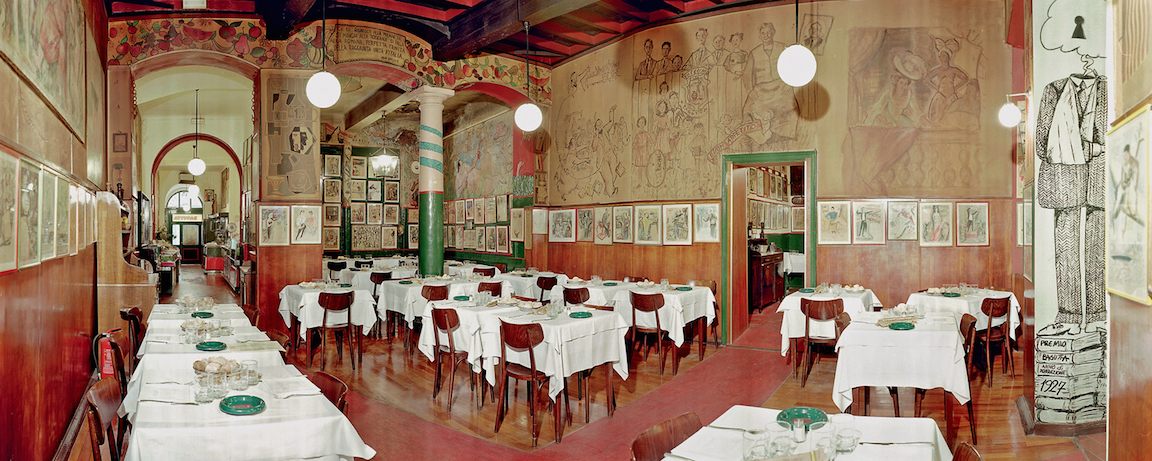
After a while, the fidgeting,
argumentative
crowd up front began to thin as more guests were
seated, many muttering that
they would never
return to the
restaurant but knowing the situation was just as
bad at most other restaurants
during Fashion Week. Many, seeing
Nicola and Catherine smiling like cats from their
table against the wall in the
first room, regarded the young women with a mix of
envy and wonder as to who they
might be to have earned such an
envied table, even before anyone else had been
seated. Perhaps
they were models—the new girls
everyone wanted to work with—waiting for one of
the designers to arrive or one
of the many men who dated such women.
Not surprisingly, the regulars
who actually
lived in Milan took it all in stride, knowing that
when Fashion Week ended,
Bagutta and its egalitarian seating policies would
return to normal.
For now they simply whispered to each
other how ridiculous the fashionistas were about
such matters when there was
business to be done.
At about one-thirty, when
things had settled
down and people were sipping glasses of Champagne
or just mineral water, the front door opened and
four people,
two women, two men, came in. One woman, about
fifty, led the others, all in
their twenties, and was in a high state of frenzy,
not over where she would
sit—Carlo knew her and had already saved a table
in the front for her—but over
a problem having to do with a show.
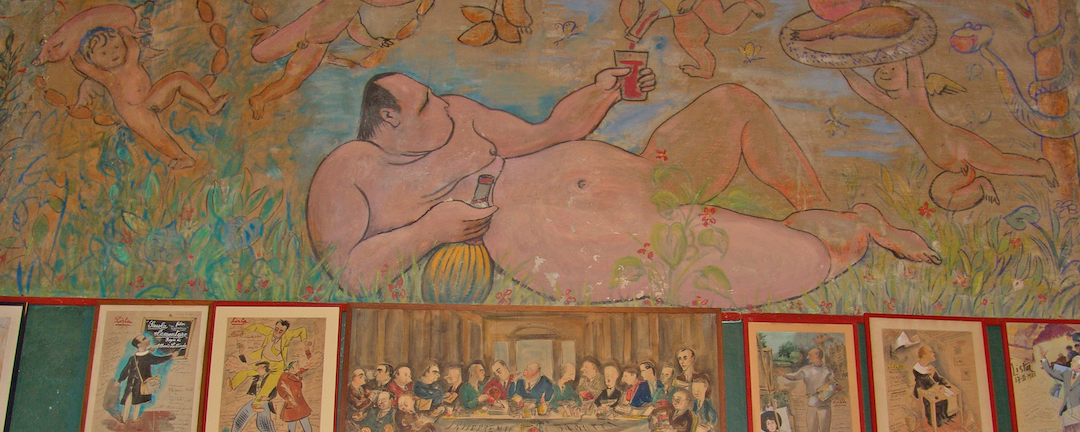 Waving
her hands and speaking in bullet-speed
Italian, a cigarette in one hand and a FAX sheet
in the other, she was cursing
the heavens for causing her unimaginable agony at
that very moment.
The other woman, dressed in a black
turtle neck and slacks, seemed to bear the brunt
of the tirade, glancing at the
two men, who were obviously assistants, to
indicate she’d never seen the woman
in such a rage.
Once seated, the
woman demanded bottled water—subito!—telling
her
assistants that she was not eating anything.
Waving
her hands and speaking in bullet-speed
Italian, a cigarette in one hand and a FAX sheet
in the other, she was cursing
the heavens for causing her unimaginable agony at
that very moment.
The other woman, dressed in a black
turtle neck and slacks, seemed to bear the brunt
of the tirade, glancing at the
two men, who were obviously assistants, to
indicate she’d never seen the woman
in such a rage.
Once seated, the
woman demanded bottled water—subito!—telling
her
assistants that she was not eating anything.
The rest of the room watched
the woman’s
display; some, who knew her, smirked that this was
not untypical of her. Nicola and Catherine were
fascinated by
the operatic nature of her display.
Then, all of a sudden, the woman went dead
silent and squinted at Nicola
for several seconds, dropped her spent cigarette
into an ashtray, and said
softly, “Cardinale. . . .” Her
assistants looked at each other in complete
puzzlement and then, after looking
again at Nicola, all nodded in unison.
Their boss thought Nicola looked like the
Italian actress Claudia
Cardinale, and, well, she did.
The woman, whose table was just
across from
Nicola’s, suddenly got up and took two long steps,
snapping her fingers for
Carlo to bring her a chair. Nicola
and Catherine stared at this very strange Italian
woman and pulled back in
their seats.
“Bella,”
said the woman to Nicola, surprisingly warmly. “Come si chiama?”
Nicola stammered in Italian, “Io mi chiamo
Nicola Santini.”
“Santini?” said the woman,
detecting an
American accent. “You are American?”
Nicola nodded while Catherine
tried to suppress
a smile.
Realizing the woman could speak in English,
Nicola replied,
“Si,
from New York.”
“What you doing here? You a
model?”
Nicola smiled and said, “No,
I’m a student
here.”
The woman turned towards her
companions and
said in Italian, “You see what I see? This face,
even the headband. She’s
Cardinale!”
Her assistants,  who
always agreed with their boss, started
enthusiastically nodding and
repeating, “Si! Si! Cardinale! Claudia
Cardinale.”
who
always agreed with their boss, started
enthusiastically nodding and
repeating, “Si! Si! Cardinale! Claudia
Cardinale.”
The woman raised her eyes and
hands to the
ceiling, saying “Mi dispiace!”
as if
to beg God’s forgiveness for her earlier words of
sacrilege. Then
she turned to Nicola.
“Listen, Signorina,
I get a
little pazzo
sometimes, but I have
big, big problem, and I think you are the answer
to it.”
“Me?” asked Nicola, slightly
laughing.
“Si,
ah, forgive me, is okay I sit down here?” Not
waiting for a response, she
occupied the chair that Carlo had provided. “My
name is Patrizia Palma and I’m
a designer here in Milan.”
Nicola glanced at Catherine for
a sign of name
recognition but her friend shrugged.
“I know you no know me,” said
Patrizia Palma,
“because my clothes they never show in America.
This week I have my first show
here in Milan to introduce my first line of
clothes for international sale. Capisce? And the … come se
dice? Temo?”
“Theme,” said Nicola.
“Si,
theme. Okay, my theme is go back to the nineteen
sixties fashion of Italy. I
colori, the big skirts, miniskirts, Capri
pants and”—pointing to Nicola’s
head—“the headbands. Just like Claudia Cardinale
wear then. You know Claudia Cardinale?”
Nicola effusively said yes,
reeling off three
or four of the star’s movies, including “The Pink
Panther” and
“8 ½.”
The woman smiled grandly. “Ah,
benissimo!
Claudia was—is—a
beautiful woman!
I know her. So my problem is I have my
big show tomorrow and I going to
have all my models in my clothes and with make-up
from the 1960s so they look
like Claudia, Virna Lisi, Sophia Loren, Gina
Lollabrigida, Stefania
Sandrelli—so many beautiful
girls
then, wonderful
actresses!” Almost
all of Signora
Palma’s sentences
ended with an exclamation point.
“That’s a wonderful idea,” said
Nicola, smiling
and revealing her perfectly straight American
teeth.
“Si,
is good, eh?,” said the diva-like designer. Then,
frowning and turning to her
own table, “Federico,
una cigaretta, per
favore!” and to Carlo, “Bello, una
bottiglia di Champagne, per favore. Grazie.”
Carlo lit her cigarette and
rushed away to get
a bottle of iced Champagne.
“So, Nicola—I call you Nicola,
okay?—here’s my
big problem.
I already pick all my
models, beautiful ragazze
who look
like the actresses. And I had one who looked a
little like Cardinale, non perfetto
but is okay, we can do a
little magic with make-up. And she
have a perfect figura,
you know, not
too, too—come
si dice, magro? Ah,
skinny! My models they have curves like real women
not like these models who
look sick.”
“But I’m not a model,” said
Nicola.
“Bella,”
Signora
Palma said, touching Nicola’s
cheek. “Is nothing to be a model if you as
beautiful as you.
But listen to me: The girl I picked to
be Cardinale had another job this week and she
gonna be back tonight and my
show is tomorrow afternoon. And
what happened is una disastro! Una calamità!”
Nicola
assumed the girl had taken ill. “She’s
sick?”
“Worse! Sick, they can still
walk down the
runway. All
those skinny ragazze
look sick!”
“What then?”
“This girl she goes off on a
job on a yacht off
Sardegna and she gonna fly back.
But this goddamn yacht she stop going, you
know?”
“Broke down, you mean?”
“Si, si,
broke down. And so the model she no able to get
back to Milano tomorrow, so I
have no Cardinale. Capisce?
Now all
the girls they busy with jobs tomorrow.
How I gonna find a Cardinale?”
Nicola said slowly, “A-a-n-nd.
. . .”
“You will
be my Cardinale!”
Nicola said, “Signora Palma, I’m really flattered
but I’d be terrified on the
catwalk with all those professional models, I
could never—”
“Cara,
listen to me.
Most these girls
they too young, they just come to Milan for a few
days, and everyone—tutti—is
very beautiful.
Armani, Versace, Cavallo—they hire only
models they work with in the past, the big names. You know the Polish one,
Paulina—I can no pronounce her name.”
Catherine piped in,
“Poriszkova. I think she’s
from Czechoslovakia.”
“Si,”
said Signora
Palma. “I no can afford,
I no want
those girls. People see
them too much.
I want girls nobody
never see before.
I want you,
Nicola Santini. Bella, I
need you. Domani.”
Nicola was flushed, never
expecting such a
crazy thing to happen to her. True,
when she was a young teenager, she did some
catalog modeling for a Sunday ad
supplement, but she never cared to pursue it
beyond that.
Signora
Palma looked at Nicola with the sad, imploring
eyes of a mother asking her
child for help.
“Per
favore, bella, please, please do
this for me.”
 Tentatively, Nicola said, “And if I do, I
get paid for what, one show,
one day?”
Tentatively, Nicola said, “And if I do, I
get paid for what, one show,
one day?”
“Bella,
I only have one show, but I pay you well, I pay
you very fair.
You ask the other girls. You make a big
hit on the runway, you see, other people want to
hire you. You
could have a very big career.”
The Champagne arrived and Carlo
popped the cork
and poured some for everyone at both tables.
The prospect of what Signora
Palma
just said about a career caused a slight chill in
Nicola, for while she thought
she might actually consider the Signora’s
one-day offer—which would be fun, after all—she
sensed that to go any further
would be to compromise everything she loved, had
studied and planned for.
She
turned to Catherine—knowing what she’d
say—and asked, “I don’t know,
Catherine. What do you think?”
“Nick,” said Catherine, putting
her hand on her
friend’s forearm, “if you say no, you’ll always
regret it. If you say yes,
you’ll have a helluva story to tell everyone back
home. And you make a few lira.
What have you got to lose?”
Signora
Palma held out her hand. “Allora,
you
say okay?”
Nicola, brightening, shrugged,
shook hands and
said, “Well, . . I guess so. But
what do 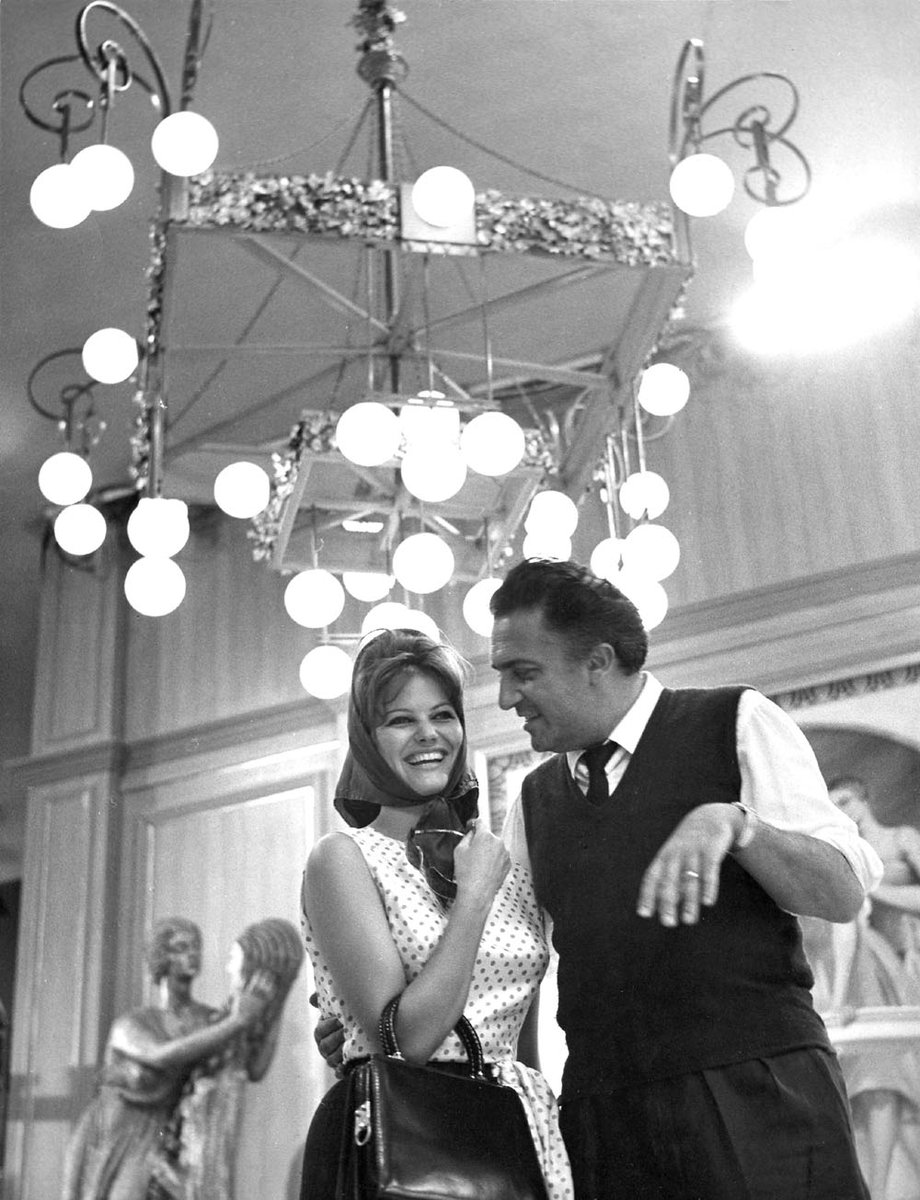 I have to do?”
I have to do?”
At the other table Signora Palma’s assistants took out
notebooks and pens, prepared to
write down every detail of what they were about to
hear.
“Okay, you come to my studio
tonight, we have a
first fitting.
I want to see you
with a bob, like Cardinale, and a headband.”
“You want me to cut my hair?” Nicola asked in
semi-shock.
“No, no, bella,
your hair is too beautiful to cut. We give you a parruca.”
“Oh, a wig.”
“Si,
a wig.” Taking Nicola by the chin, Signora
Palma said, “Carissima,
molte grazie,
molte grazie.
You save my
life.” She kissed Nicola on both cheeks, then a
third very big smooch of a
kiss.
There were a few more details
to go over,
including Nicola’s fee, which was generous, worked
out over glasses of
Champagne and Bagutta’s food. When
a stuffed agnolotti
came to the
table, Nicola for the first time in her life
regarded a plate of pasta with
hesitancy. Would
eating this
delicious agnolotti,
full of ricotta
and dressed with butter and sage, make it
impossible to fit into the clothes Signora
Palma had planned for her to
wear? Then,
noting that she’d
eaten no bread and wasn’t going to have a second
course or dessert, she ate
every pasta pillow on the plate with both gusto
and enormous satisfaction. Signora
Palma’s fitter could deal with it.
At the end of the meal, by
which time Bagutta
was emptying out for the afternoon shows, the six
of them at the two tables
clinked classes one last time and Signora
Palma toasted, “Buona fortuna!”
Nicola
repeated the phrase, knowing she was
going to need it badly.
GREAT WINES OF
THE WILLAMETTE VALLEY
By John Mariani

Winemakers around the world have
always known that to make a good wine the vines
have to struggle, meaning that vines that must
search for water gain strength in the exercise.
The point is certainly well taken in Oregon,
where ripening is not taken for granted in a
cool climate like that of the beautiful
Willamette Valley.
As recently as the 1960s few
thought that Oregon could make good vinifera-based
wines at all. David Lett, called the “Papa of
Pinot Noir” in the state, disproved that fallacy
by the end of the decade, and, helped by
investments by some top French and Italian
estates, Oregon Pinot Noir growth soared in the
1980s.
As
conventional wisdom goes, Pinot Noir is a
famously finicky grape that can produce an
over-extracted fruit bomb of a kind made by so
many California wineries, or a too delicate
Burgundy of a style even an aficionado may have
trouble loving.
As Alex Sokol Blosser, owner of his
namesake winery, told me: “In France the earthiness of
their wines make for a softer, rounder texture and
more minerality. The most important component in
pinot noir is acid; complexity hangs on that acid.
In California the pinot noir is picked riper to
make a heavier, showy style. The riper the grape
the more phenolics, and the sugar goes up and
ferments into higher alcohol. Here in Oregon,
we’re in the middle, between France and
California. We don’t have the former’s soil but we
don’t get California’s heat. Our summers are
drier, and this year we had like two weeks of snow
on the ground. So we treat the grapes more
delicately. In California they harvest in
September or October; we harvested in August last
year.”
Many wine lovers and media are
now saying that Willamette Valley makes America’s
finest Pinot Noirs, and I am inclined to believe
it, especially after tasting an array of them with
various foods that ranged from grilled ribeyes to
pasta with sausage and grapes. Here are some I
think are way up in the Pinot Noir firmament,
along with a few very good Chardonnays of varying
styles.

LEFT COAST TRUFFLE
HILL CHARDONNAY 2018 ($24)—The
17-year-old winery, 37 miles from the “left
coast,” sits among four acres of European Black
Truffle-inoculated hazelnut trees, shrub roses and
holly oaks, with its Swiss clone Wädenswil Pinot
Noir planted on five acres and five of Chardonnay
at the hilltop. I’d have to squint hard to
convince myself of any truffle scent in the
bottle, but the aromatics of peach and pear
underpinned with a nice acid cut keep this from
being a cloying Chardonnay while still offering a
stylish American take on the varietal. Very well
priced.
YAMHILL
VALLEY
VINEYARDS CHARDONNAY 2018 ($28)—Yamhill
Valley is part of the Willamette Valley region and
the winery, begun in 1983, planted this Chardonnay
block in 2005. The cool climate, 35 inches of
annual rainfall and rich clay soil make for a
complex Chardonnay that does not depend on
over-oaking for its flavors, making it perfect for
grilled salmon or poultry.
WILLAKENZIE
ESTATE
CHARDONNAY 2018 ($75)—The name of the
winery comes from the region’s two rivers, the
Willamette and the McKenzie. It was founded by a
Burgundian named Bernard Lacroute, so it nods to
his heritage, and the
wine has a substantial body of a kind you find in
some of the Grand Crus like Aloxe-Corton and
Chevalier Montrachet. The vintage was one of ideal
conditions, and the Chardonnays are at their peak
for drinking well. Further aging is unlikely to
improve them much. I love the fresh fruit of this
wine. It’s pricey but it’s in a league of its own
among Willamette Chardonnays. A
broiled lobster with butter demands a wine like
this.
and the
wine has a substantial body of a kind you find in
some of the Grand Crus like Aloxe-Corton and
Chevalier Montrachet. The vintage was one of ideal
conditions, and the Chardonnays are at their peak
for drinking well. Further aging is unlikely to
improve them much. I love the fresh fruit of this
wine. It’s pricey but it’s in a league of its own
among Willamette Chardonnays. A
broiled lobster with butter demands a wine like
this.
WillaKenzie’s 2017 Pinot Noir
($50) is also close to a Burgundian style, being
of moderate body and silky texture with tannins
complementing the fruit. An excellent choice for
lamb, pork or veal. Oddly enough, it costs less
than the winery’s Chardonnay.
GRAIN
MORAINE
YAMHILL CARLTON PINOT NOIR 2018 ($35)—Should
you be drinking Pinot Noirs this young?
Absolutely, the exception being the greatest,
priciest red Burgundies, which wouldn’t be
released so early anyway. But the terroir of
Oregon allows the fruit to ripen and emerge above
softened tannins, so drinking a Pinot Noir 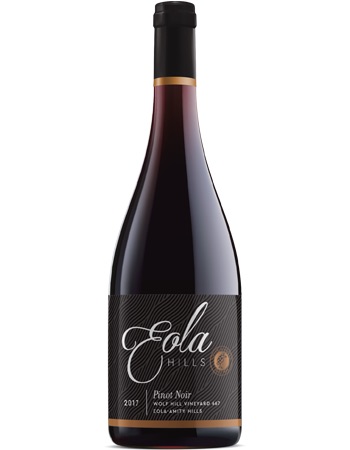 like this right now is a
capital idea. The winery is only seventeen years
old and its first vintage was only in 2005, but
Grain Moraine started by using some of the finest
Dijon Pinot Noir clones—667, 777 and 115—and has
already built an impressive rep.
like this right now is a
capital idea. The winery is only seventeen years
old and its first vintage was only in 2005, but
Grain Moraine started by using some of the finest
Dijon Pinot Noir clones—667, 777 and 115—and has
already built an impressive rep.
EOLA HILLS WOLF HILL VINEYARD PINOT NOIR 2017
($75)—Oregon native (there aren’t that many in the
wine trade out there) Tom Huggins and 11 investors
founded Eola in 1986, and with winemaker Steve Anderson here for
more than 20 years, they’ve had a lot of time to
sort out vineyards and clones and all that goes
into making their superb Pinot Noirs. He employs
what he calls a “judicious” use of American oak
(16 months), so that the big dark fruit flavors
and lush aromas come through on their own. With
game birds this would be impeccably married.
Sponsored by

Any of John Mariani's books below may be ordered from amazon.com.
 The Hound in Heaven
(21st Century Lion Books) is a novella, and
for anyone who loves dogs, Christmas, romance,
inspiration, even the supernatural, I hope you'll find
this to be a treasured favorite. The story
concerns how, after a New England teacher, his wife and
their two daughters adopt a stray puppy found in their
barn in northern Maine, their lives seem full of promise.
But when tragedy strikes, their wonderful dog Lazarus and
the spirit of Christmas are the only things that may bring
his master back from the edge of despair.
The Hound in Heaven
(21st Century Lion Books) is a novella, and
for anyone who loves dogs, Christmas, romance,
inspiration, even the supernatural, I hope you'll find
this to be a treasured favorite. The story
concerns how, after a New England teacher, his wife and
their two daughters adopt a stray puppy found in their
barn in northern Maine, their lives seem full of promise.
But when tragedy strikes, their wonderful dog Lazarus and
the spirit of Christmas are the only things that may bring
his master back from the edge of despair. WATCH THE VIDEO!
“What a huge surprise turn this story took! I was completely stunned! I truly enjoyed this book and its message.” – Actress Ali MacGraw
“He had me at Page One. The amount of heart, human insight, soul searching, and deft literary strength that John Mariani pours into this airtight novella is vertigo-inducing. Perhaps ‘wow’ would be the best comment.” – James Dalessandro, author of Bohemian Heart and 1906.
“John Mariani’s Hound in Heaven starts with a well-painted portrayal of an American family, along with the requisite dog. A surprise event flips the action of the novel and captures us for a voyage leading to a hopeful and heart-warming message. A page turning, one sitting read, it’s the perfect antidote for the winter and promotion of holiday celebration.” – Ann Pearlman, author of The Christmas Cookie Club and A Gift for my Sister.
“John Mariani’s concise, achingly beautiful novella pulls a literary rabbit out of a hat – a mash-up of the cosmic and the intimate, the tragic and the heart-warming – a Christmas tale for all ages, and all faiths. Read it to your children, read it to yourself… but read it. Early and often. Highly recommended.” – Jay Bonansinga, New York Times bestselling author of Pinkerton’s War, The Sinking of The Eastland, and The Walking Dead: The Road To Woodbury.
“Amazing things happen when you open your heart to an animal. The Hound in Heaven delivers a powerful story of healing that is forged in the spiritual relationship between a man and his best friend. The book brings a message of hope that can enrich our images of family, love, and loss.” – Dr. Barbara Royal, author of The Royal Treatment.
 |
The Encyclopedia of American Food and Drink by John F. Mariani (Bloomsbury USA, $35) Modesty forbids me to praise my own new book, but let me proudly say that it is an extensive revision of the 4th edition that appeared more than a decade ago, before locavores, molecular cuisine, modernist cuisine, the Food Network and so much more, now included. Word origins have been completely updated, as have per capita consumption and production stats. Most important, for the first time since publication in the 1980s, the book includes more than 100 biographies of Americans who have changed the way we cook, eat and drink -- from Fannie Farmer and Julia Child to Robert Mondavi and Thomas Keller. "This book is amazing! It has entries for everything from `abalone' to `zwieback,' plus more than 500 recipes for classic American dishes and drinks."--Devra First, The Boston Globe. "Much needed in any kitchen library."--Bon Appetit. |
"Eating Italian will never be the same after reading John Mariani's entertaining and savory gastronomical history of the cuisine of Italy and how it won over appetites worldwide. . . . This book is such a tasteful narrative that it will literally make you hungry for Italian food and arouse your appetite for gastronomical history."--Don Oldenburg, USA Today. "Italian
restaurants--some good, some glitzy--far
outnumber their French rivals. Many of
these establishments are zestfully described
in How Italian Food Conquered the World, an
entertaining and fact-filled chronicle by
food-and-wine correspondent John F.
Mariani."--Aram Bakshian Jr., Wall Street
Journal.
"Equal parts
history, sociology, gastronomy, and just
plain fun, How Italian Food Conquered the
World tells the captivating and delicious
story of the (let's face it) everybody's
favorite cuisine with clarity, verve and
more than one surprise."--Colman Andrews,
editorial director of The Daily
Meal.com. "A fantastic and fascinating
read, covering everything from the influence
of Venice's spice trade to the impact of
Italian immigrants in America and the
evolution of alta cucina. This book will
serve as a terrific resource to anyone
interested in the real story of Italian
food."--Mary Ann Esposito, host of PBS-TV's
Ciao
Italia. "John Mariani has written the
definitive history of how Italians won their
way into our hearts, minds, and
stomachs. It's a story of pleasure over
pomp and taste over technique."--Danny Meyer,
owner of NYC restaurants Union Square
Cafe, The Modern, and Maialino.
|
 |
 |
 |
 |
 |
 |
 |
 |
 Everett Potter's Travel Report:
Everett Potter's Travel Report: 
 Eating Las Vegas
JOHN CURTAS has been covering the Las Vegas
food and restaurant scene since 1995. He is
the co-author of EATING LAS VEGAS – The 50
Essential Restaurants (as well as
the author of the Eating Las Vegas web site: www.eatinglasvegas.
He can also be seen every Friday morning as
the “resident foodie” for Wake Up With the
Wagners on KSNV TV (NBC) Channel 3 in
Las Vegas.
Eating Las Vegas
JOHN CURTAS has been covering the Las Vegas
food and restaurant scene since 1995. He is
the co-author of EATING LAS VEGAS – The 50
Essential Restaurants (as well as
the author of the Eating Las Vegas web site: www.eatinglasvegas.
He can also be seen every Friday morning as
the “resident foodie” for Wake Up With the
Wagners on KSNV TV (NBC) Channel 3 in
Las Vegas.
MARIANI'S VIRTUAL GOURMET
NEWSLETTER is published weekly. Publisher: John Mariani. Editor: Walter Bagley. Contributing Writers: Christopher Mariani,
Robert Mariani, Misha Mariani, John A. Curtas, Gerry Dawes, Geoff Kalish,
and Brian Freedman. Contributing
Photographer: Galina Dargery. Technical
Advisor: Gerry
McLoughlin.
If you wish to subscribe to this
newsletter, please click here: http://www.johnmariani.com/subscribe/index.html
© copyright John Mariani 2020

